Shortly after sunrise on a dank, damp, dreary first Saturday of April in Green Bay, Wisconsin, I looked out my kitchen window and saw a woodcock in our backyard. She—her size revealed her gender—was standing at the edge of a skiff of fresh snow, her pear-plump, needle-billed silhouette jumping out unmistakably from that white backdrop. I'd been on the phone with a friend who'd retired to St. Augustine, Florida, and I interrupted whatever we were chatting about to exclaim "Oh my god, there's a woodcock in the backyard!"
"That's cool," my friend said. "Have you seen them there before?"
"Never," I said, reaching for the binoculars I keep handy for just such unexpected bird-watching occasions. "We had snow squalls and blustery winds overnight—she must've been blown off-course and forced to make an emergency landing."
"They migrate at night? I don't think I knew that."
"Yep. They navigate by the stars—and who knows what else. Anyway, she's in the corner behind the garden—you know, where the big spruce and that cluster of cedars are—so there's plenty of cover for her. Unless she's disturbed she'll likely hunker down there for the rest of the day …"
And that's exactly what she did, spending the remainder of a chilly, leaden-skied day on a roughly 500 square-foot patch of ground in the northeast corner of our suburban backyard. The moment I got off the phone I hollered at my wife, Joan, to come take a look, and of course the sight of the lost (or at least temporarily misplaced) woodcock immediately activated her protective motherly instincts.
"Do you think she's OK?" Joan fretted, peering through the binoculars at this queer little buff-and-brown visitor that, according to legend, was assembled from the parts left over after the gods had made all the other birds.
"She looks fat and fit to me," I shrugged. "We just have to hope one of those damn housecats doesn't come prowling around."
"Oh, I wish you hadn't said that!" she cried. "Now I'll be worrying about her all day."
Some switch was flipped in my memory then, and I found myself transported to an October afternoon a quarter-century ago. Joan and I were still in the early stages of our courtship—it'd be a couple more years before we got around to tying the knot—and while she had no interest in becoming a hunter herself she liked to tag along when I chased grouse and woodcock.
Or at least she liked it up to a point, having caught on pretty quickly to the fact that this kind of hunting, with its brush-busting and cover-crashing and limb-whipping, bears about as much resemblance to an idyllic stroll through the golden autumn woods as a bar brawl does to a poetry reading. An hour of beating the bushes was about her limit; after that she was looking for a place to relax and have a cup of coffee.
Something else Joan caught on to pretty quickly was that Emmylou, my go-to dog in those days, was special. I didn't have to explain it to her; it was, as they say, self-evident.
"Emmylou is a really good hunter, isn't she?" Joan had remarked on one of our first outings together, an observation that made me understand how miraculous it all had to look through her eyes—which is to say, through the eyes of someone coming to the sport without prejudices or preconceptions, and with only the vaguest sense of how it's supposed to work. The idea that somewhere in a vast expanse of dense, impossibly tangled woodland hides a small bird that your dog is expected to find, point, and continueto point no matter how long it takes you to claw your way to where she's standing; and then, when you get there, the idea that you kick around in front of her and this unseen bird just materializes, flushing with a startling whir of wings …
For Emmylou to perform this magic act again and again, almost as if on command, had to appear to Joan like the blackest of the Black Arts. In any event it made a deep impression on her … and on the particular October afternoon I was thinking of, Emmy had been up to her usual standard. I'd killed a brace of woodcock over her, poked fecklessly at a pair of grouse that were little more than blurs thundering through a morass of cedar blowdowns, and watched in bemused helplessness as several other woodcock effected safe getaways by using Joan as a human shield.
Our timing was perfect, too, reinforcing my long-held conviction that late-afternoon, for a host of reasons, is the best time to hunt. No sooner had we gotten back to the truck and settled ourselves on the tailgate when an enormous umber moon rose through the tops of the birches. This cued a mournful chorus of coyote song, and as it faded and died a new music arrived to fill the absence: the flute-like trill of wings.
I'd secretly hoped for this when I suggested to Joan that we go for a short hunt, and now it was coming to pass. "It," of course, was the twilight flight of woodcock, the birds vaulting skyward from their shadowed daytime haunts to barnstorm their way to, well, somewhere. Plumply limned against the coral-hued canvas of the western sky, we watched, enthralled, as half-a-dozen woodcock passed in batlike flight. Were they heading merely for a roosting cover on the far side of the swamp, or to a woodland in the dairy country miles to the south, a stop on their long and perilous migration to the wintering grounds?
These questions being unanswerable, we left them hanging in the moonlight, like the image of the woodcock as they spiraled into the evening glow.
Now, years later, a northbound woodcock had been forced by weather to land in our backyard. Without putting too fine a point on the comparison, she was like a shipwreck survivor, a castaway marooned and forced to fend for herself on a tiny island. I found myself, like Joan, fretting over her.
As sportsmen we can't help but be concerned for the welfare of these gamebirds that are so desperately meaningful to us. But while this concern is real, its object is abstract. When we say we're worried about "the" woodcock (or "the" bobwhite, or "the" sage grouse), what we mean is the species as a whole. It's an idea, a concept; except in the fuzziest kind of way, we can't really imagine it.
To be preoccupied with the survival of an individual bird, though, is something entirely different. It's more intimate, more personal, and over the course of our "day of the woodcock" I checked on her literally dozens of times— wandering out to the kitchen, grabbing the binoculars off the counter, and scanning until I could pick her out. It wasn't always easy; all she needed to disappear—almost—was a tuft of dead grass and a low-hanging cedar branch. True to her nature as a member of a species that's evolved to go unnoticed, she was a master of the art of concealment.
Our worry for her welfare notwithstanding, we enjoyed this rare, probably once-in-a-lifetime opportunity to observe a woodcock going about its "normal" routine. On a couple of occasions I've crept to within a few yards of male woodcock on their singing grounds; I've watched them puff out their chests, tilt back their heads, strut around like little lords, and utter their buzzingly nasal peent call to all points of the compass. I've been so close to them, in fact, that I've been able to hear the breathy, barely audible tuka that precedes the peent.
But I'd never watched a woodcock probe for worms and even gobble a few (although from what I could see she used her bill less like a drill and more like a shovel); or raise a foot to scratch an itch; or rouse, shake her feathers, shake them again, and then nestle herself against Mother Earth's bosom, all but vanishing there as she waited, as still as a stone, for darkness to fall. And I'd certainly never seen a woodcock do the bizarre "head-bobbing" walk, in which the bird's head jack-in-the-boxes straight up-and-down as if it's spring-loaded while the bird's legs seem to move in slow-motion.
Remember the loose-jointed gait of "Mr. Natural," the legendary R. Crumb cartoon character? That's what a woodcock in head-bobbing mode will remind you of. (You can find video of it on YouTube.)
As for the purpose of this behavior, well, that remains a mystery. The biologists' best guess is that it may—repeat, may—help them to detect the subterranean movements of worms, but they admit that they're ultimately at a loss to explain it.
All I know is that while it looks as goofy as hell, it somehow seems completely in character. It adds another layer of endearing eccentricity to what is already the most endearingly eccentric of upland gamebirds, and we felt blessed to have witnessed it.
Between checks on the backyard woodcock's status, the memories unspooled. I thought back to my beginnings as a woodcock hunter, and to Zack, the handsome setter who was my first real bird dog, and to a particular late-October morning when the woodcock, clearly flight birds, were piled so densely into a few acres of red osier dogwood, highbush cranberry, and other scrubby growth that he barely broke out of a trot, catwalking from point to point to point. We were back at the truck with a five-bird limit in less than an hour; I was euphoric, but more than that, I felt like I'd turned a corner, that in some hard-to-define but nevertheless important way I'd arrived.
Before, I'd been a guy who hunts woodcock. Now, I was a woodcock hunter.
I thought, too, of the day Bob McCabe, the eminent wildlife biologist, shared an anecdote about his friend and teacher, Aldo Leopold. We were sitting in Bob's office at the University of Wisconsin, where Leopold founded the country's first Department of Wildlife Management.
"Aldo and I had arranged to go woodcock hunting," Bob recalled, "but first he asked me to bring a soils map of Adams County to his office. I thought 'What the hell does he want with a soils map?' He laid it out, studied it, and said 'This looks pretty good.' I couldn't tell what he was looking at, but finally figured out it was a certain soil type that was good for earthworms. He knew this would be a feeding place for woodcock, so we went there and filled our limits."
"The woodcock," Leopold memorably wrote, "is a living refutation of the theory that the utility of a gamebird is to serve as a target, or to pose gracefully on a slice of toast."
At some point fairly early in the game, when I had three or at most four seasons of serious woodcock hunting under my belt, I had an epiphany: that the woodcock, of all our upland gamebirds, is the most generous. It is the most accommodating and forgiving; it affords more second chances, more shots, literally and figuratively, at redemption.
It is also, within the parameters of the here-today-gone-tomorrow profile common to all migratory species, the most reliable. If you go to the right places, with the right dog, at the right time of year, the woodcock will give you your chance. They play by the rules, and we love them for it.
And therein lies the hunter's eternal paradox, a paradox that the woodcock, by my lights, embodies more fully and poignantly than all other birds: that we kill what we love. This is the thing that so confounds non-hunters, and so confounds us when we try—in vain, invariably—to explain it to them. All we can do is fall back on the fundamental insight of Ortega: One does not hunt in order to kill; one kills in order to have hunted.
The woodcock was gone the following morning, as we expected her to be. Her fate was out of our hands but not out of our thoughts; we wished her bonne chance, hoping that she'd nest successfully and bring another generation of head-bobbing woodcock into the world.
I also hoped, fervently, that our paths would never cross again.




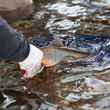

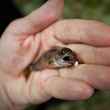
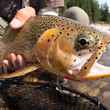
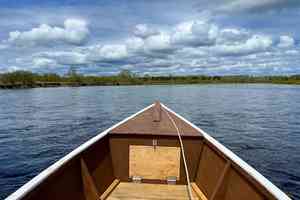
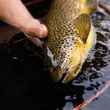

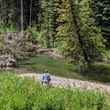

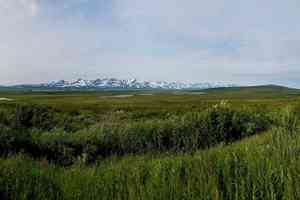
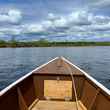

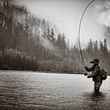
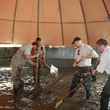

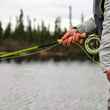

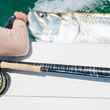
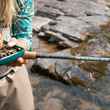
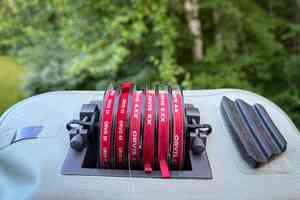
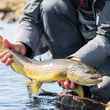
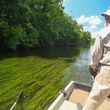

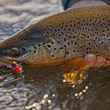
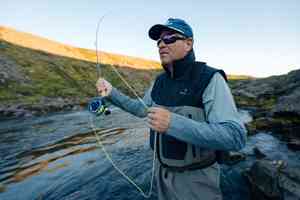
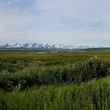

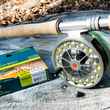
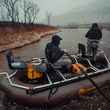
Comments
Vicki replied on Permalink
I have one in my GB east side yard today!
Juliet replied on Permalink
Tom, It’s been 5 years since you wrote about the woodcock in your yard. Today is December 7, 2024 on the west side of Columbus, Ohio and I have a woodcock in my suburban yard. Her bobbing motion caught my eye and binoculars confirmed her identity. I watched her bob and drill across my yard and once she was gone, I started the internet searching and came across your article. The scene in our house played out much the same way, beginning with concern for the bird’s health and ending with her disappearing into the thick cluster of Green Giant Arborvitaes. Hopefully she is in flight now and onto to the massive metro park close by.
Hexmeister replied on Permalink
Wonderful! What a treat to have seen her. Thanks so much for sharing.
Pages